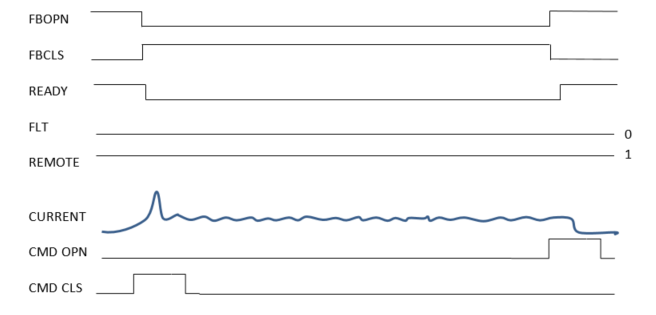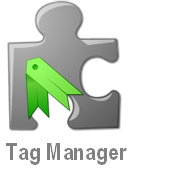Insights from the PROFIBUS wire (understanding equipment behaviour)
This blog is a by-product of a recent project to investigate
and validate the sequence of events on some electrical Switch-gear where the
SCADA and Switch-gear communicate over PROFIBUS DP. This was done by examining what was happening "on the PROFIBUS wire" (Actually PROFIBUS DP has two wires, a red one and a green one!).
It also brought into focus the idea that analysis of process data as it appears “on
the wire” could have many operational and maintenance benefits – achieved
without additional loading or complication for the associated SCADA. While it is true that modern field-bus and industrial Ethernet systems support the use of intelligent field devices which can provide access to configuration and diagnostic information via FDT and similar engineering tools there is a an effortless simplicity to gaining insight on the wire through independent means. This is especially true when comparing events from different sensors or items of equipment to determine cause-and-effect relationships and accurate time sequencing.
Now we go back to the actual investigation. An intermittent logic fault reported by the
SCADA suggested that the feedbacks from Switch-gear contactors were sometimes reported in
the wrong sequence causing incorrect operation. By recording data change at the wire level we were to monitor the behaviour of ten pumps which all
shared a common IO template and test this hypothesis.
The pumps all had an IO template as shown below:
Signal Description
|
Signal
Name
|
Signal
Type
|
(XB01)
Feedback Signal – Contactor is Open
|
FBOPN
|
DI
|
(XB02)
Feedback Signal – Contactor is Closed
|
FBCLS
|
DI
|
(XB08)
Ready (Start)
|
READY
|
DI
|
(XB20)
Some Fault condition that will prevent normal operation
|
FLT
|
DI
|
(XB04) Remote
Operation of Pump is enabled
|
REMOTE
|
DI
|
(XQ01)
Current that flows when pump is operated (0 to 100%)
|
CURRENT
|
AI
|
(YB01)
Open Command (pulse of width of 2.0seconds)
|
CMD OPN
|
DO
|
(YB02)
Close Command (pulse of width of 2.0seconds)
|
CMD CLS
|
DO
|
BEFORE STARTING A
PUMP
If we view what happens on the
PROFIBUS wire over a period when a pump is started and then stopped we expect
to find initially (an idle pump in the "off" state):
(INPUTS)
FBOPN =
1 This implies that the pump is
stopped (not energised)
FBCLS = 0 This implies that the pump
is stopped (not energised)
READY =
1 This indicates that the pump is
available to be started
FLT = 0 This indicates that there
is no local fault that might prevent operation
REMOTE = 1 This indicates that the SCADA is enabled to
operate the pump
CURRENT = 0 As the pump is stopped there is no current
(OUTPUTS)
CMD OPN = 0 There
is no active command to stop
CMD CLS = 0 There is no active command to start
WHEN STARTING A PUMP
When a pump is requested to start
we expect to see a 2-second duration pulse, ⸥⸺⸤ (0 to 1 and then 1 to 0 transition) on
CMD CLS which will cause:
(INPUTS)
FBOPN = 0 This implies that the pump
is now started (energised)
FBCLS = 1 This implies that the pump
is now started (energised)
READY = 0 This implies that the pump
is started (energised) or is not able to start
REMOTE = 1 This indicates that the SCADA is enabled
to operate the pump (does not change)
CURRENT > 0 For
a few hundred milliseconds there will be a high start-up current before the current drops back into
normal operating range ( 0 > CURRENT <= 100)
(OUTPUTS)
CMD OPN = 0 There
is no active command to stop
CMD CLS =
0 After the 2-second-wide pulse there
will be no active command present.
During normal pump operation the value
for CURRENT changes while all other signals remain in the same state (as
above).
WHEN STOPPING A PUMP
When a pump is requested to stop
we expect to see a 2-second duration pulse, ⸥⸺⸤ (0 to 1 and then 1 to 0 transition) on
CMD OPN which will cause:
(INPUTS)
FBOPN = 1 This implies that the pump is stopped
(not energised) was previously 0
FBCLS =
0 This implies that the pump is
stopped (not energised) was previously 1
READY = 1 This indicates that the pump is again
available to be started – was previously 0
FLT = 0 This indicates that there
is no local fault that might prevent operation (unchanged)
REMOTE = 1 This indicates that the SCADA is enabled
to operate the pump (unchanged)
CURRENT = 0 Within
one or two scans, there is no current as the pump is stopped.
(OUTPUTS)
CMD OPN = 0 After
the 2-second active pulse has completed the signal return to zero
CMD CLS = 0 There is no active command to start
This expected sequence is described
below.
 |
| The expected sequence for pump starting, running and stopping |
Our approach was to passively listen on the PROFIBUS network
and capture the traffic between the SCADA and the Switch-gear, knowing that the commands
would be contained in the CYCLIC DATA EXCHANGE OUPUT issued by the SCADA to the
Switch-gear and that all the feedbacks would be contained in the CYCLIC DATA
EXCHANGE INPUT received by the SCADA from the Switch-gear. Also by creating
filters to watch for specific data changing we could limit the amount of data
that we needed to record.
As the intermittent error conditions could be days apart we
choose to install a monitor at the remote site and then upload the recorded
data to our office where we developed an offline tool for analysis and
reporting – a tool that created a simple-text-log of when signals changed and
the duration of time that had elapsed before the change occurred. It also
created an excel spreadsheet that showed the state of all related signals for
every DATA EXCHANGE message that contained any data that had changed.
 |
| PROFIBUS Monitoring Tool with Remote Monitoring |
The PROFIBUS monitoring tool made use of PROCENTEC
PROFITRACE to connect passively onto the PROFIBUS network and to log the data
to disk.
The above screen shows a filtered
view of recorded PROFIBUS messages that contain the I/O data exchanged between
the PLC Master (Station Address:1) and the LV Switch-gear PROFIBUS Slave
(Station Address:30).
All outputs from PLC are
exchanged in a single message (SRD HIGH) while the inputs from the LV
Switch-gear are exchanged in a single message (DL). From the I/O Schedule it is
possible to extract the I/O for each pump and analyse when values change and to
measure the duration of time before a change occurs.
The next picture (an extract from an Excel
spreadsheet report for one of the pumps highlights normal expected behaviour
from just before a START and until just after a STOP.
 |
| An example of Excel Spreadsheet produced for a pump operation : start, high-current, normal current, and stop |
THE IDEA OF A GENERAL PURPOSE TOOL FOR OPERATIONAL UNDERSTANDING
This blog will not go into any detail on the project finding but will rather indicate what the author saw as a general-purpose tool and benefit from passive listening on the wire (in this case PROFIBUS but it could be MODBUS or some industrial Ethernet) independent of the host SCADA system.
- Listening on the wire, independently, provides a single accurate version of what information was shared between the SCADA and Switchgear Station – with timing and detail at the same resolution of raw information transfer. When high-level systems log and report events there is no guarantee that they have the same accuracy as they may be subject to slower cycle times and asynchronous task execution and reporting.
- Determination of the exact sequence of events is made possible. Changes in feedbacks can only be reported with the INP message while commands are only transferred in OUT messages. This makes sequence of event analysis straight forward.
- What was very insightful was the high-speed-capture of the start-up current which could be as much as ten times the normal operating current. As these start-up currents are very short in duration, a few hundred milliseconds, it is possible that they are typically not seen in any SCADA logs. This suggests that very useful statistics and profiles of start and stop operation could be captured in this way and be provided to asset optimisation and equipment maintenance applications for analysis and operational intervention. This can be achieved without any load on the SCADA and by not requiring the SCADA to have to have much faster scans to capture these transients.
- Hence there is the real sense that this type of non-intrusive data recording and analysis may have many valid use cases – suggesting that there is more to PROFIBUS diagnostic monitoring than just the statistics of physical network faults and configuration issues – what the data is doing on the wire may provide useful insights not easily acquired from SCADA or the PlantData Historian that typically receives its data from the SCADA.
If you have any questions or comments you are invited to
contact the author daveb@idx.co.za



